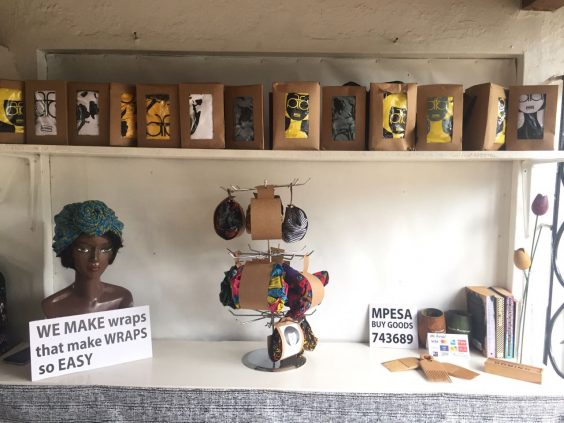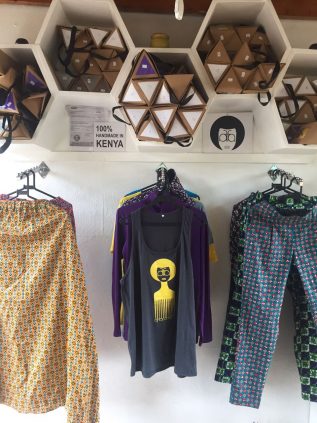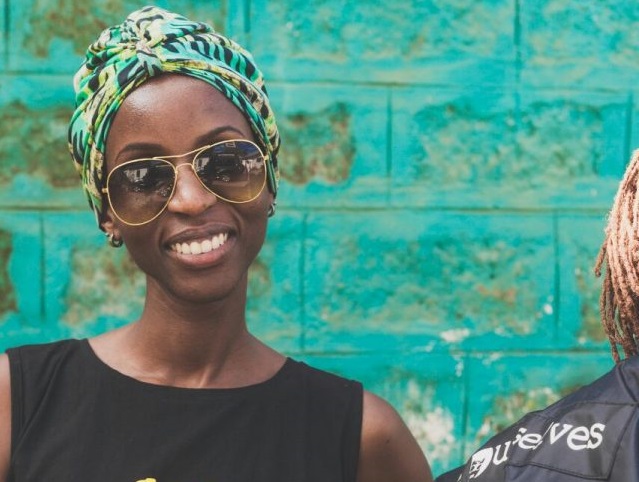For Ziki Odotte, cutting off her dreadlocks and embracing her afro came with its own unique set of challenges. Transitioning from the low maintenance look of dreadlocks to wearing an afro was certainly not easy. Little did she know that on her journey to understanding her natural hair in this new state, she would come up with the ultimate no fuss hair accessory.
Ziki Odotte is the owner and founder of the Afrofanatic fashion line, we had a chat with her on her journey in the fashion industry.
How did Afrofanatic start?
It began when I just cut off my dreadlocks and my hair was in this weird phase where I was struggling to understand it. So I looked around for ways in which I could ‘hide’ my hair until I figured it out and at the same time still look good.
Then it hit me that I could make a head wrap that that wouldn’t need to be tied afresh every time I took it off. I watched the naturals on YouTube and satin was very popular among them because it didn’t suck out the moisture from hair. So I made mine with satin lining.
I realised I could turn this into a business when I visited my aunt’s salon and one of her clients saw me with it and she was very impressed that I just pulled it on and didn’t have to tie it.
She asked me to make her one for her which I did. Then she came back for more and she even referred me to her friends and that’s how things sort of began for me.
Was your background always in fashion & design? Or did you teach yourself how to make head-wraps?
My background is actually in computer science but I’ve always liked to build stuff with my hands. In the beginning, when I’d just started doing this as a business, I enrolled at a fashion school along Ngong Road. This helped me learn the basics of design, pattern making and how the sewing machines work. It was a cool experience because i like the instant gratification that one gets after seeing the product that you’ve worked on just come to life and you’re happy with it.
What were some of the challenges that you had in the beginning after you decided to formalize Afrofanatic into a business?
It’s been a little over a year since I started and in the beginning, it was all about getting my name out there. I looked online and found out that fairs were the best option for me because I could get direct feedback from my customers, also the one on one interaction could boost my sales. I went to about three fairs and the feedback was mostly positive. So I had the sales part and getting feedback slightly figured out at least.
Another challenge was on the production side, It took me a while to figure out. Initially, I was making the wraps on order which was very time consuming and uneconomical. You’d find a customer likes a certain design of wrap but doesn’t like the print or the fit isn’t right so I have to customize the wrap for them. So if I had a big order, I’d have to measure each head and then the client would have to select the print that they liked and that wasted a lot of time and I was limited in the number of wraps I could make.
One time, I locked myself in for a weekend and brainstormed on how I could make a ‘one-size’ fits all design so that the client’s only worry would be the print. I finally figured out the size design around mother’s day. I started testing it out at K1 Flea market since we’d just recently acquired some space there. The reception was good and I was happy that it was working. So I could now make the wraps in advance and meet the demand beforehand.
Another challenge, which I’m still trying to figure out is finding someone who can help me with making the head-wraps so that I can free myself to other aspects of the business like doing more research for new markets and opportunities.

What about financing? How did you get the money to begin?
It was mostly my savings and support from family and friends. At one time, though, I did approach some banks to get funding but it was during the time of the new interest rate law and banks were a bit skittish about lending to SMEs.
Banks also have a lot of terms and conditions before they could lend out any money. For example, some banks required you to have banked with them for a certain period of time, all of which were things I hadn’t done or didn’t have. So basically, that was a dead end. I am grateful for my friends and family because they really backed me up.
How did you figure out pricing?
In business, they always tell you to think about the amount of resources that have gone into making the product and work that into the price of the product. But I think the ability to correctly price a product so that it reflects it’s value also lies on how you view yourself. A lot of people get scared because they think if they put a certain price on the product, people might not like you or no one will buy your stuff. But you have to think about how much care has gone into your product and not be afraid of what people are going to think. If there is value in your product and it’s clear that there is value then people are going to buy it at the price that you’ve set.

What about the decision to expand your line to include more than head-wraps? How did it come about?
I started with T-shirts, those came not so long after I’d decided to do the head-wraps. The decision to do the T-shirts came about at the time I was coming up with a logo for the brand. I toyed around with a few ideas before coming up with the Afro image integrated into an Afro comb. I put it on a T-shirt and when I went out with it, people responded well to it and I started doing the T-shirts and then the trousers and everything else thereafter.
What is the future for Afrofanatic?
To get the business to the point where it can run itself without me having to constantly be there and I can focus on other aspects of the business. I also want to expand the brand to have more variety.
What advice would you give to someone who wants to start their own business?
To just start, it usually scary at first but start.
It’s also important to nurture relationships because there is no way you can do it on your own so if you have people you can lean on for support then you’re definitely in a good place.
Feedback is also so important. Position yourself in such a way that your customers can link with you directly so that you get to know her they’re saying and learn from them.


